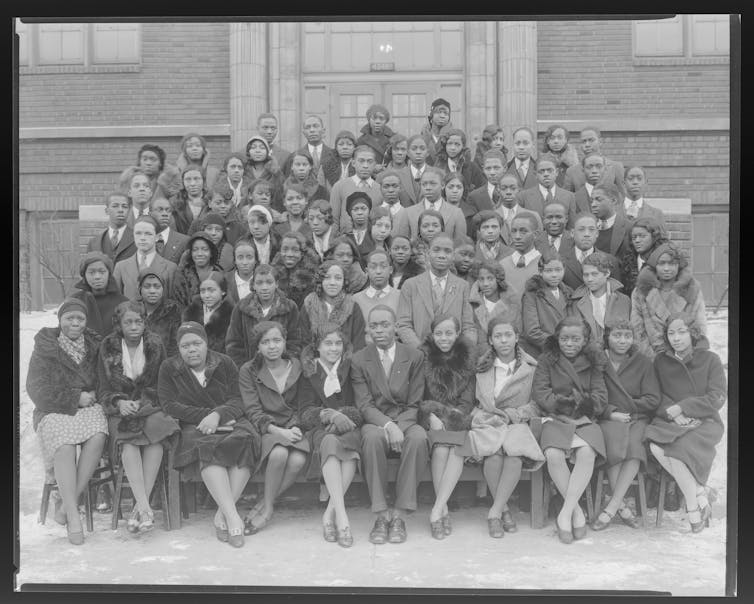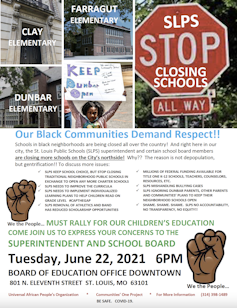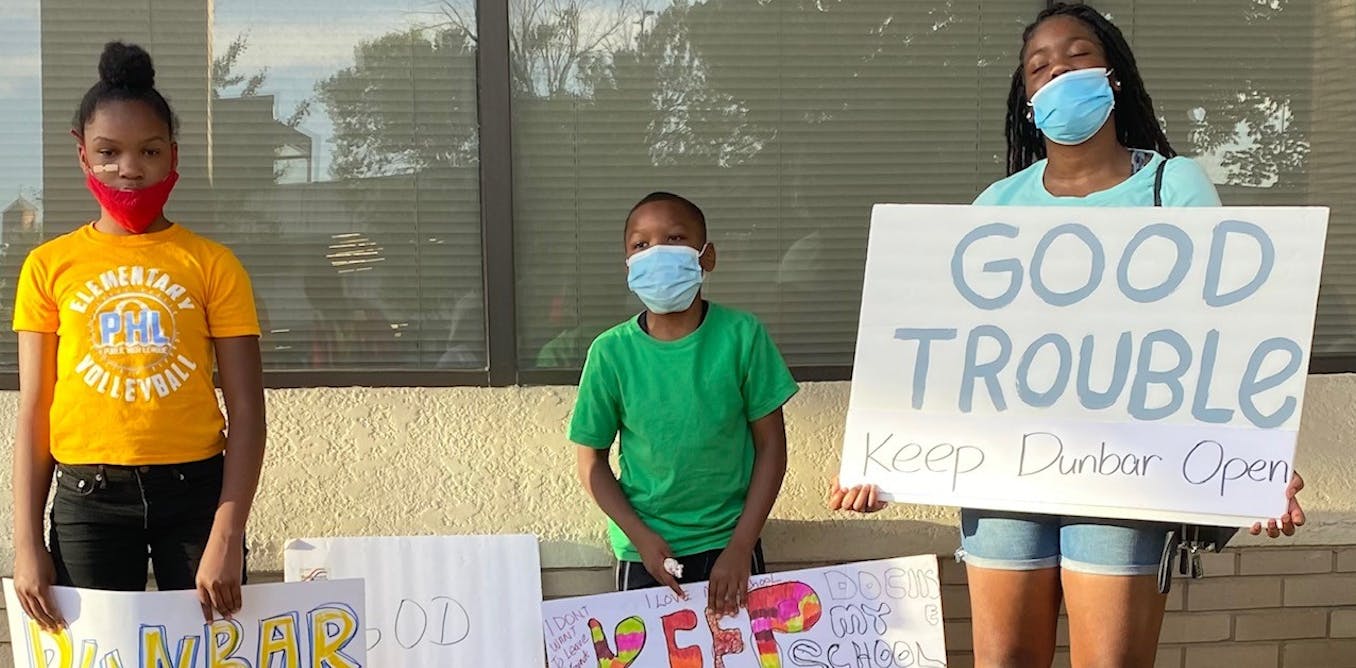Table of Contents
People of the St. Louis neighborhood recognised as The Ville have been preventing for a long time to end the closing of Charles H. Sumner High School, the oldest traditionally Black substantial faculty west of the Mississippi River.
Sumner High University has been less than repeated threats of closure from the college board and the superintendent, who cite declining enrollment. The most latest these kinds of danger arose in December 2020.
Proven in 1875, Sumner High is named right after a previous U.S. senator who vehemently opposed slavery. The school’s alumni symbolize a who’s who of Black people today, together with rock stars Tina Turner and Chuck Berry, comedian and civil rights activist Dick Gregory and tennis legend Arthur Ashe.
During Black people’s background in the U.S., predominantly Black K-12 faculties have served as pillars in Black communities. Their worth is next only in significance to the Black church. Neighborhood educational institutions enable stabilize communities and foster a perception of belonging for young children, serving as a basis for educational accomplishment.
This is why many dad and mom, neighborhood customers, activists and even scientists like me who have examined modern Black K-12 schools discover the shuttering of predominantly Black faculties – irrespective of the rich heritage and results of some of these educational institutions – to be disconcerting.

Missouri Historical Modern society
Epidemic of closings
Sumner Significant has been spared for the time remaining.
But other traditionally Black faculties, this sort of as Paul Laurence Dunbar Elementary in St. Louis, have not been so lucky. Dunbar Elementary, named following the well-known Black poet and author, will no extended bodily enroll learners. District leaders said they want to change Dunbar to a virtual faculty beginning in August 2021. This led mom and dad, local community users and activists to protest the superintendent and faculty board’s selection, asserting that the physical closing of the college removes a vital pillar in the historic Black Jeff-Vander-Lou neighborhood.
Two city educational institutions that I have researched, both of those renowned for educating very low-revenue Black pupils, were being also just lately shuttered. Gentrification and the emergence of constitution schools contributed to an enrollment decline at Whitefoord Elementary in Atlanta, major it to near its doorways in 2017 immediately after serving the community for 93 a long time. Farragut Elementary in St. Louis – also found in The Ville – shut in May 2021. The rationale when a lot more: declining enrollment.
As just lately as the early 2000s, Black learners attending Whitefoord and Farragut outperformed Black pupils at other educational institutions in their respective towns, which includes individuals at magnet and constitution universities, on standardized tests.
These university closings are element of an epidemic of Black public university closures in U.S. cities across the country, together with in Atlanta, St. Louis, New Orleans, Baltimore and Chicago.
According to the Countrywide Center for Instruction Figures, 1,310 educational institutions shut in 2017-18, affecting 267,000 students.
Black and lousy college students are disproportionately affected by these closures. For example, Black pupils comprise 31% of the college students in urban community educational facilities but stand for 61% of students in people that shut.
Human costs
Sumner Substantial Faculty stands just 10 miles from the streets of Ferguson, Missouri, in which protesters marched all over the summer of 2014 to desire justice for the police killing of Michael Brown.

Amid countrywide rallying cries and hashtags that “Black Life Matter,” I imagine greater consideration needs to be offered to endeavours aimed at halting the closing of Black K-12 community colleges. Just as the Black Lives Make any difference movement demands a end to the unjust killing of Black people, inhabitants of predominantly Black communities all through the U.S. are also fighting to cease the killing of their communities via college closures.
Superintendents and college boards frequently present their cases for closing colleges applying race-neutral language and data about lower effectiveness, dwindling enrollments and substantial working expenditures. Seldom factored into the equation are the historic and social circumstances and policies – racism, persistent underfunding of Black schooling, redlining, disinvestment in Black neighborhoods and desegregation – that gave rise to those data.
Moreover, lacking from these analyses are the human expenses linked to closing colleges in already struggling neighborhoods. When policymakers take away colleges from vulnerable communities, they take away some of the few stabilizing establishments. These structures normally sit vacant for years and become eyesores and objects of vandalism.
Racial reckoning
I increase these problems in just this time of racial reckoning that purports to price Black establishments. A hurry of philanthropic and governmental pounds as a final result of protests for Black lives has not long ago focused Black companies, civil rights and social justice businesses, as very well as historically Black colleges and universities, or HBCUs.
HBCUs have rightfully gained further means for their operate educating generations of Black college students. But I imagine that to serve Black children, proponents of Black instruction ought to prolong this guidance to include things like Black K-12 general public educational facilities. I see three primary reasons for this.
To start with, of the 7.7 million Black young children who show up at general public elementary or substantial faculties today, 3.3 million go to faculties that are 50% or extra Black. Practically 2 million Black students show up at faculties that are at least 75% Black. Conversely, around 200,000 Black learners attended the nation’s HBCUs in 2018.
I obtain it disingenuous for governmental agencies and philanthropies to deliver economic guidance to Black college students at the college level but not at the K-12 amount, which contains the most essential phases of their educational and social enhancement.
Next, the circumstances for Black pupils who abruptly go away closed universities do not get far better. Students from closed educational facilities generally expertise a decrease in math check scores, seldom transfer to much better-carrying out educational institutions and undergo social and academic disruption.
And ultimately, saving Black K-12 public universities is linked to broader endeavours to assistance Black communities, families and youngsters. In supporting Black educational institutions, policymakers can aid re-anchor struggling Black communities. This holistic target entails supporting people with instruction and work-education programs, stimulating neighborhood Black-owned companies and supporting community companies that serve youngsters and households.
[Get the best of The Conversation, every weekend. Sign up for our weekly newsletter.]
Next steps
How can this be carried out? As with the new passage of stimulus payments to stabilize the financial system and households influenced by COVID-19, governmental and philanthropic bucks will have to enhance regional dollars to counter funding gaps for universities that predominantly provide Black learners and improve the infrastructure of those people colleges.
Providing monetary aid to end the enormous closing of K-12 Black community educational facilities – which are billed with educating millions of Black pupils on the racial and financial margins – would make an emphatic statement that Black lives certainly make a difference.




